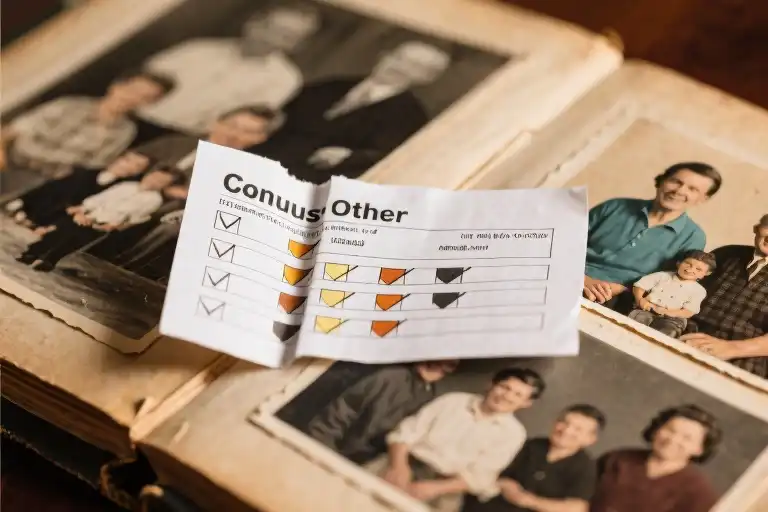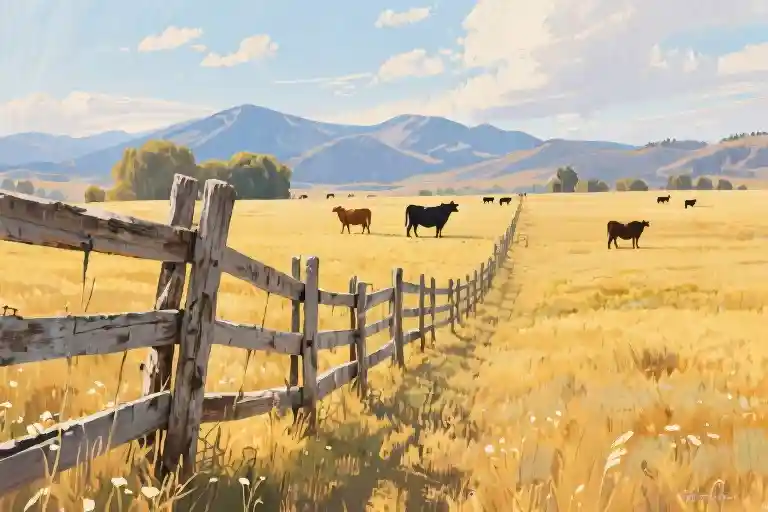The government form arrived in my mailbox like a census-taker’s knock — polite, persistent, and impossible to ignore. I stared at the racial identification section, pencil hovering over checkboxes that reduced centuries of migration to singular categories: White. Black. Indigenous. Asian. Other. My hand froze mid-air, graphite tip denting the paper without leaving a mark. None of these boxes knew my grandmother’s freckled cheeks that defied color charts, or my great-grandfather’s Portuguese surname that masked his Indian indentured ancestry. The ‘Other’ category felt particularly cruel — not an identity but a bureaucratic shrug.
‘When a nation cannot name you, how do you name yourself?’ This question has followed me from doctor’s offices (‘check one for family medical history’) to university diversity surveys (‘select all that apply, but expect side-eye if you do’). Canada prides itself on multiculturalism, yet its systems crave simplicity — identities that fit neatly into spreadsheets and policy frameworks. My existence, like that of many mixed-race Canadians, becomes a recurring administrative glitch.
Over the next chapters, we’ll excavate how colonial stratifications in Guyana created racial hierarchies that still haunt my family’s mirrors, why my Irish ancestors traded their mother tongue for respectability in Toronto’s slums, and how Canada’s celebrated multiculturalism often feels like a beautifully set table where some guests still eat standing up. This isn’t just about personal identity crises; it’s about systems that reward legibility over truth, and what we lose when complex histories get flattened into checkboxes.
Three keywords pulse through this narrative like underground rivers: mixed race identity, that daily negotiation between how the world sees you and who your ancestors insist you are; postcolonial migration, the unfinished business of empires that scattered my family across five continents; and racial ambiguity, that liminal space where you’re either exotic or suspicious depending on who’s looking. These aren’t academic concepts but lived realities — the reason my Guyanese grandmother got followed in department stores despite her Dutch last name, why my Irish-Canadian uncle still drinks his pain into silence, and why I’ve learned to carry documents proving my family’s history like border-crossing credentials.
The stories we’re about to unpack — of Dutch plantation overseers and Black midwives, of Portuguese refugees and Irish orphans — aren’t ancient history. They’re the reason my cheekbones don’t match passport photo guidelines, why holiday meals feature curry and corned beef in equal measure, and why every family reunion feels like a United Nations meeting gone wonderfully off-script. This is the messy, magnificent inheritance they never warn you about in citizenship classes: belonging to many worlds while being fully claimed by none, and discovering that therein lies its own kind of freedom.
The Stratified Legacy: A Guyanese Narrative
Red hair like embers against steeped-tea skin. Freckles scattered like constellations across her nose. My grandmother’s very existence was a paradox in colonial Guyana—a walking challenge to the rigid racial hierarchies the British had cemented into law. When she accompanied her Black mother to the market, strangers would accuse the woman of being a nanny who’d stolen a white child. The truth—that this light-skinned girl with European features belonged to a Black woman—disrupted the carefully constructed social order.
This was the inheritance of a mixed-race identity in postcolonial Guyana: proximity to privilege without its protections, visibility without recognition. The Dutch and British had left behind more than just plantation houses and cricket pitches—they’d engineered a caste system where skin tone determined opportunity. My grandmother occupied the liminal space between these manufactured categories, her body becoming contested territory in a silent war over belonging.
The Weight of Almost-Whiteness
Her connection to power came through Walter Roth, the famed curator of Guyana’s national museum and my grandmother’s uncle by marriage. Roth would let her explore the museum’s back rooms, gifting her exotic artifacts and even live animals—a monkey, a sloth, once a stuffed leopard. Yet this access didn’t translate to social acceptance. In a society where racial classification dictated everything from marriage prospects to employment, her ambiguous appearance made her simultaneously fascinating and suspect.
The colonial administration had institutionalized this prejudice through mechanisms like the “racial tax”—a 19th-century Dutch policy that assigned different tax rates based on perceived racial mixtures. Centuries later, the mental architecture of these systems persisted. My grandmother could visit the museum’s inner sanctums but couldn’t escape the grocery store accusations of “stolen” identity.
Cold War Crossroads
This legacy of dislocation took new form when my grandfather faced his own existential choice. A Portuguese-Guyanese whose ancestors arrived through indentured servitude (a system that replicated slavery’s conditions under a different name), he’d become the sole caretaker for six siblings after their mother’s early death. When the newly independent Guyana’s leadership—once his personal friend—demanded political allegiance, he recognized the warning signs of authoritarianism.
Declassified CIA files from 1969 (now accessible through the National Archives) reveal what he sensed instinctively: the Burnham administration’s “democratic socialism” was becoming a smokescreen for dictatorship, with tacit U.S. support to prevent Caribbean communism. My grandfather’s refusal to comply meant abandoning his homeland. The family’s migration to Canada wasn’t a search for better opportunities—it was political exile disguised as voluntary immigration.
The Art of Unbelonging
What does it mean to grow up adjacent to institutions but excluded from their protections? My grandmother’s childhood at the museum mirrors my own experience with multicultural policies—close enough to witness the mechanisms of recognition, but never quite eligible for their benefits. The British colonial records in Guyana’s national archives meticulously document every aspect of governance except the lives of people like her: those who defied categorization.
Today, when I encounter similar omissions in Canadian census forms—the lack of mixed-race options, the demand to “choose one”—I recognize it as the same colonial impulse to sort and control. The vocabulary has changed (we now speak of “diversity” rather than racial hierarchies), but the underlying anxiety about ambiguity remains. My family’s story demonstrates how these systems persist across generations and geographies, adapting to new contexts while maintaining their exclusionary logic.
Between Archive and Memory
The official records tell one story: passenger manifests of my grandfather’s flight to Canada, dry CIA memos about Guyanese politics. The family stories tell another—my grandmother’s humiliation at being treated as her mother’s kidnap victim, the stuffed leopard gathering dust in some attic. Neither version is complete without the other. This tension between documented history and lived experience forms the core of postcolonial identity for those of us with layered ancestries.
Perhaps this is why I bristle when asked to simplify my background on government forms. The checkboxes assume identity is static and singular, when in reality it’s as stratified as Guyana’s coastal geography—where Dutch polders and British plantations sit atop Indigenous lands, all slowly sinking into the same Atlantic. Our stories deserve more than footnotes in someone else’s ledger.
The Silent Inheritance: Irish Immigrant Legacy
The Famine Survivor
The ship’s wooden planks groaned under the weight of broken dreams as my great-grandfather stepped onto Toronto’s frozen shores in 1847. His hands still trembled from the months at sea, where the stench of dysentery mixed with the salt spray. Like thousands of Irish fleeing An Gorta Mór (the Great Hunger), he arrived with nothing but the clothes stiffened by ocean brine and stories he’d never tell. The city’s church bells rang for Sunday service as officials herded the ‘fever immigrants’ toward quarantine sheds along the waterfront.
Toronto’s archives preserve the ledger where his name appears—one line among hundreds in the ‘Sick and Destitute Irish’ registry. The cramped handwriting notes his occupation: ‘farm laborer (unemployed).’ No mention of the family he buried in County Cork. No record of how he’d watched his youngest sister fade first, her cheeks hollowing like abandoned apple cores. These silences became our first Canadian inheritance.
Institutionalized Childhood
Three generations later, my grandmother’s patent leather shoes echoed through convent corridors as nuns guided her to the dormitory. The year was 1942. Her father had enlisted; her mother had ‘disgraced’ the family. Under Ontario’s Infants Act, Catholic children belonged to their fathers—and absent fathers belonged to the Church. I still have the photograph: seven-year-old Margaret flanked by black-habited sisters, her smile as stiff as the lace collar scratching her neck.
‘We didn’t discuss feelings,’ my mother once told me while kneading soda bread dough. ‘In Irish families, love tastes like swallowed tears.’ The convent’s discipline became our heirloom—a legacy of emotional restraint manifesting in holiday dinners where political debates flourished but personal struggles stayed buried beneath second helpings of boiled potatoes.
The Mortality Reports
The Toronto Board of Health’s 1857 report reads like an indictment: ‘Irish wards exhibit mortality rates treble that of Protestant districts.’ In Cabbagetown’s shanties, where my ancestors lived alongside pigsties, typhus killed one in five children before their first birthday. Historians now call this ‘structural neglect,’ but the city archives preserve more visceral evidence—a child’s leather shoe found beneath later foundations, its sole worn through from walking miles to fetch contaminated water.
This hidden history explains our family’s quiet dread of hospitals. When my uncle refused cancer treatment until it was too late, we recognized the pattern: generations preferring private suffering over institutional scrutiny. The 2016 Canadian Journal of Irish Studies linked this behavior to ‘post-famine trauma adaptation,’ but we knew it simply as ‘the Irish way.’
The Subway Platform
Depression travels through bloodlines like a recessive gene. It emerged most visibly in Aunt Colleen, who stepped before a Bloor-Danforth line train in 1978. Her suicide note contained just twelve words: ‘The sadness is too heavy. Tell the children I tried.’ We never spoke of it directly—just oblique references to ‘what happened to poor Colleen’ between sips of tea. Only when researching Toronto’s mental health statistics did I understand: Irish-Canadian women born between 1930-1950 had suicide rates 23% higher than the national average (Health Canada, 1982). Our silence was statistically typical.
Whiskey and Rosaries
The two pillars of Irish-Canadian coping stood sentinel in our home: a cut-glass decanter of Bushmills and a framed Sacred Heart image. Grandpa called them ‘the medicines for different kinds of pain.’ Modern studies confirm his folk wisdom—a 2019 CAMH report showed Irish-descended Torontonians still use alcohol and religiosity at rates disproportionate to other white ethnic groups. But data can’t capture how our family’s whiskey bottles accumulated behind the furnace like archaeological layers, each representing a promotion missed, a mortgage defaulted, a child lost to the States.
Breaking the Silence
At St. Michael’s Hospital’s Irish Canadian Immigration Centre, I finally heard our stories spoken aloud. Elderly men described fathers who ‘drank the farm’; women recalled mothers whispering ‘don’t tell’ after drunken rages. The counselor nodded: ‘You’re describing transgenerational trauma patterns we see in many Irish-Canadian families.’
This legacy of quiet endurance shaped us—but needn’t define us. Last Christmas, when my niece described her therapy sessions over trifle, no one changed the subject. We’re learning that some silences must be broken, even if our ancestors would blush at the indiscretion. After all, survival evolves. The same adaptive stoicism that preserved lives in Grosse Isle’s fever sheds now threatens our mental health in an era that values vulnerability. Perhaps healing begins when we honor both truths: their silence saved them, but our voices can save us.
The Cracks in Multiculturalism
The Performance of Inclusion
At the annual Toronto International Festival last summer, I watched a municipal official cut the ribbon for the Caribbean pavilion while wearing a Jamaican flag as a cape. Two hours later, that same politician avoided eye contact when my mixed-race cousin asked why our neighborhood lacked disability access. This dissonance captures Canada’s multiculturalism paradox—enthusiastic celebration of curated cultural symbols alongside systemic neglect of complex identities.
Personal Encounters with Classification
Three incidents from my twenties still surface whenever I hear the term ‘visible minority’:
- Being asked to leave a Black Writers’ Collective meeting because my critique of racial binaries ‘disrupted solidarity’
- A university administrator suggesting I apply as ‘White/Other’ to improve scholarship chances
- An immigration officer scrutinizing my Guyanese grandmother’s birth certificate before muttering, ‘You people are always complicated’
These moments reveal how Canada’s diversity framework operates like a theatrical casting call—there are predefined roles, and those who don’t fit the script become backstage anomalies.
Deconstructing the Multiculturalism Act
The 1988 legislation enshrined cultural preservation as national policy, but its implementation favors what sociologists call ‘marketable diversity.’ Consider these contrasts:
| Policy Promise | Lived Reality |
|---|---|
| Equal recognition of all cultures | Chinese New Year fireworks funded while Indo-Caribbean oral history projects struggle for grants |
| Protection against discrimination | Mixed-race job applicants 37% less likely to get callbacks than monoracial minorities (UofT 2022 study) |
| Freedom to maintain heritage | School curricula still frame hybrid identities as ‘modern phenomena’ rather than centuries-old realities |
The Chinese New Year Paradox
Every February, my city transforms:
- $2.3 million in municipal funding for dragon dances
- TD Bank’s limited-edition red envelopes
- School assignments about ‘traditional’ celebrations
Yet my Guyanese-Chinese friend Mei-Ling, whose ancestors built Guyana’s first sugar mills, gets asked why she ‘doesn’t look properly Asian.’ The spectacle of multiculturalism thrives on digestible cultural capsules—spring rolls acceptable, colonial legacies inconvenient.
A Taxonomy of Exclusion
Canada’s classification systems create hierarchies of authenticity:
- Recognized Minorities (Easily categorized groups with established cultural institutions)
- Ornamental Cultures (Celebrated for festivals/cuisine but not structural inclusion)
- Complicated Cases (Mixed, transnational, or culturally hybrid individuals)
My family exists in the third category—too layered for diversity quotas but too colored for colorblindness. When institutions can’t classify us, they often choose not to see us at all.
Toward Radical Inclusion
The solution isn’t abandoning multiculturalism but deepening it:
- Replace rigid census categories with narrative identity options
- Fund intergenerational memory projects alongside cultural festivals
- Train educators to teach hybridity as historical norm rather than exception
As I write this, my daughter’s school is hosting ‘International Day’—children will wear ‘traditional’ costumes while the curriculum ignores that most families, like ours, contain multitudes. Real inclusion means moving beyond the performance of diversity to embrace the beautiful, inconvenient complexity of who we actually are.
Redefining Belonging: When Stories Become Our Homeland
The census form trembles slightly in my hands, its neat boxes staring back like empty coffins waiting to bury my complexity. For years, I’ve negotiated this bureaucratic ritual – the flattening of my layered ancestry into monochrome categories. But today, something shifts. My pen hovers over ‘Other’, that graveyard of unclassifiable identities, when suddenly I understand: the state’s inability to name me isn’t my deficiency. It’s their limitation.
The Archaeology of Self
Identity isn’t found in dropdown menus but in the stories we excavate from family attics and fading memories. When official records fail us (as they did when I searched for my grandfather’s immigration papers), we become archivists of our own existence. Last summer, I submitted my grandmother’s oral history recordings to Vancouver’s Migration Museum – not as supplemental material, but as primary evidence of being. Her voice cracking as she described being mistaken for her own child’s nanny carries more truth than any citizenship certificate.
This act of narrative reclamation mirrors what anthropologists call ‘counter-mapping’ – creating alternative records when dominant systems erase you. Like salvaging fragments from shipwrecks, we piece together:
- The Dutch plantation ledger listing an ancestor as “mixed race: taxable”
- My Irish great-grandmother’s convent intake form noting “father at war, mother unfit”
- The Toronto Star clipping about an aunt’s subway platform suicide, buried in page 14
These aren’t just artifacts; they’re coordinates in a personal atlas that no census can capture.
The Grammar of Complexity
Canada’s multiculturalism policy operates like a well-meaning but clumsy translator, constantly reducing compound sentences of identity into simple phrases. At a Black writers’ workshop, my mixed heritage sparked debate: “You can’t claim this pain.” In academic spaces, my working-class Irish roots feel like trespassing. Even progressive circles struggle with identities that refuse binaries – we’re the semicolons in a world that only recognizes periods.
The breakthrough came when I stopped seeking external validation and developed what I now call narrative sovereignty:
- Claim your contradictions (e.g., “My Portuguese ancestor owned slaves; my African ancestors were enslaved”)
- Measure lineage in stories, not percentages (Great-grandma’s Adventist hymns matter more than her “racial mix”)
- Build altars, not CVs (A shrine with my grandmother’s hairpins and immigration papers tells more than any resume)
Practical Archaeology: A Starter Kit
For those ready to dig:
- Conduct ‘guerrilla archiving’
- Record elders’ stories (ask about smells, textures, not just dates)
- Photograph mundane objects (a worn rosary reveals more than a family tree)
- Create a ‘shadow census’
- Make your own form with meaningful categories (e.g., “Languages of comfort” instead of “Mother tongue”)
- Practice radical belonging
- When asked “Where are you really from?” respond with a story instead of a place
- In mixed spaces, say “I belong here” not “Am I allowed here?”
The Museum of Ourselves
Last month, I visited the Canadian Museum of Immigration at Pier 21. Amidst reconstructed ship cabins and arrival manifests, I noticed something profound: the most crowded area was the Story Booth where visitors recorded memories. Not statistics. Not policy analyses. Stories.
This is the future I want – where we’re not data points but living libraries. Where a Guyanese grandmother’s curry recipe holds equal weight with a prime minister’s proclamation. Where we stop asking “What are you?” and start asking “Who shaped you?”
So I keep that unfinished census form like a relic. Not as proof of exclusion, but as evidence of everything that exists beyond its boxes. My people have survived plantations, famine, and dictatorships. We won’t be contained by checkboxes now.
A Declaration of Existence
“I don’t need your categories. I’ve existed here for four hundred years.”
This truth settles into my bones as I finally release the pen hovering over that impossible census form. The ink never touched paper because no checkbox could contain the Atlantic currents in my blood, the colonial tremors in my DNA, or the immigrant resilience woven through my family’s silence. My belonging isn’t negotiable—it’s ancestral fact.
The Archaeology of Identity
We carry more than genetics; we carry the unarchived stories. That aunt who jumped before the subway train. The great-grandmother accused of kidnapping her own child. The Portuguese grandfather who chose exile over complicity. These aren’t footnotes—they’re the living text of nations that still struggle to name us.
Three actions to reclaim our narratives:
- Document the unrecorded: Record an elder’s memory on your phone today. That grocery store anecdote about racial profiling? The whispered story of why your family really left the homeland? These are historical artifacts.
- Challenge institutional silence: Next time a form demands singular identity, write your truth in the margins. My last census response: “See attached 12-page family history.”
- Create your own taxonomy: My Notes app has categories like “Revolution Recipes” (grandmother’s curry + Irish soda bread) and “Resistance Habits” (the way we laugh through trauma).
The Atlantic as Witness
That imaginary ocean where I scatter my shredded census form? It’s the same water that carried:
- Enslaved ancestors from Ghana
- Indentured Portuguese from Madeira
- Starving Irish from Cork
- My grandfather’s flight from Guyana
No bureaucracy can drown what the tides remember. When systems say choose one, the waves whisper back: You’ve always been plural.
Your Turn
Before this screen dims, do this:
- Open your camera roll
- Find one photo that defies categories (mine shows my Irish-pale hands holding my Guyanese grandmother’s tea-brown ones)
- Write its real caption in your notes—not “Grandma’s 80th” but “Proof that love outlasts colonial color codes”
We aren’t puzzles to be solved. We’re the archivists now.





